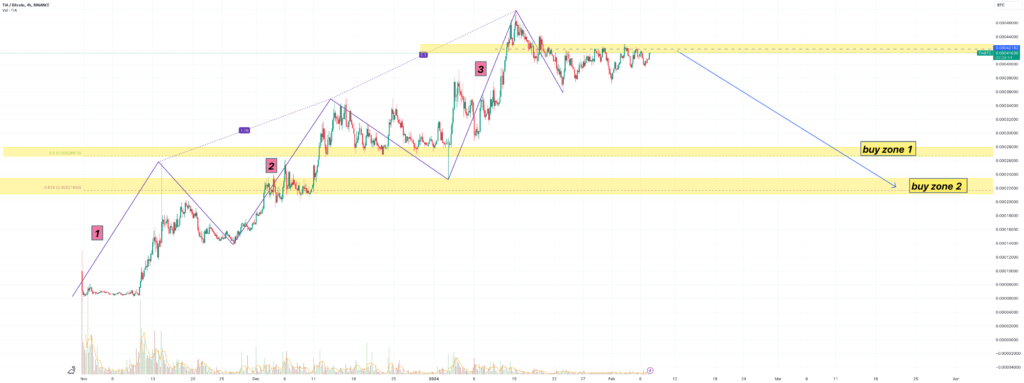 In the ever-evolving realm of
In the ever-evolving realm of
cryptocurrency, a revolutionary concept has taken center stage – staking.Beyond buying and holding, staking offers a dynamic avenue for crypto enthusiasts to actively engage with blockchain networks and unlock new potential.Imagine earning passive income while fortifying the foundations of the digital currencies you hold.If you’ve ever wondered about the magic behind staking or its potential to reshape your crypto journey, this article discusses staking and how this practice is transforming the landscape of digital finance.
What is Staking?
Staking in
cryptocurrency refers to the process of actively participating in the validation of transactions and the creation of new blocks within a blockchain network.It involves locking up a certain amount of cryptocurrency as collateral to support the network’s operations.Stakers, often referred to as validators or delegators, contribute to the security and consensus mechanism of the blockchain, and in return, they receive rewards in the form of additional cryptocurrency.Staking provides an opportunity for investors to earn passive income while actively contributing to the stability and functionality of the blockchain network.Different cryptocurrencies and blockchain platforms may have varying staking mechanisms, so you need to understand the specific rules and requirements associated with each.
Proof of Stake Validation
Proof of stake (PoS) serves as a consensus mechanism in the realm of cryptocurrency, facilitating transaction processing and the generation of new blocks within a blockchain.
This mechanism, essential for validating entries in a distributed database, plays a role in maintaining the security of the database.In the context of cryptocurrency, the distributed database is known as a blockchain, and proof-of-stake (PoS) ensures the security and integrity of this blockchain.PoS and Proof of Work (PoW) are two consensus mechanisms employed by blockchains to synchronize data, validate transactions and ensure security.In PoS, validators, who must own a significant amount of coins or tokens, verify transactions, vote on outcomes and maintain records.
PoW relies on miners who invest in processing equipment to solve cryptographic puzzles and verify transactions, earning coins as a reward.PoW’s reliance on expensive equipment and energy consumption limits access to mining, enhancing blockchain security.PoS reduces the need for substantial processing power, alleviating network congestion and eliminating the reward-based incentives found in PoW mechanisms.
Staking is exclusive to certain cryptocurrencies because of their adoption of the PoS consensus mechanism.
Not all cryptocurrencies incorporate this mechanism, thereby rendering them ineligible for staking.
The availability of staking depends on a cryptocurrency’s specific design and choice of consensus mechanism, with PoS being a prerequisite for this feature.
How Does Staking Work?
Staking involves investors locking their crypto assets for a predetermined duration to contribute to the functioning of a blockchain.As a reward for staking, participants earn additional cryptocurrency.
Numerous blockchains employ the PoS consensus mechanism to facilitate this process.
Different Ways of Staking Cryptocurrency
There are various approaches to staking cryptocurrency.
– Use a cryptocurrency exchange: One common method involves using a cryptocurrency exchange to participate in staking.This process typically involves depositing the desired cryptocurrency into a specific staking account on the exchange, which manages the staking process on behalf of the user.
– Join a staking pool: Multiple participants combine their resources to increase the chances of successfully validating blocks.
Pool members share the staking rewards based on their contributed assets.
– Become a validator: For those seeking a more active role, becoming a validator is another approach.
Validators play a crucial role in PoS networks by verifying transactions and securing the blockchain.To become a validator, individuals typically need to lock a certain amount of cryptocurrency as collateral and adhere to network rules.Validators are then rewarded for their contribution to the network’s security and consensus process.
What Are the Advantages of Staking Crypto?
– Effortless earnings: Earn interest on your cryptocurrency holdings through staking, providing a seamless way to increase returns.
– Equipment-free participation: Unlike crypto mining, staking doesn’t require specialized equipment or hardware, offering accessibility to a broader range of participants.
– Security enhancement: Staking actively contributes to maintaining the security and efficiency of the blockchain, ensuring a secure and robust network.
– Environmental friendliness: Staking is considered more environmentally friendly compared to traditional crypto mining practices, aligning with sustainable and eco-friendly principles.
What Are the Risks of Staking Crypto?
– Market risk: Falling asset prices can lead to significant losses, impacting returns even with a high annual percentage yield (APY).
Caution is advised in asset selection, emphasizing more than just a high APY.
– Liquidity risk: Staking illiquid micro-cap altcoins may pose challenges in selling or converting rewards.Optimal risk mitigation involves staking assets with higher liquidity and robust trading volumes.
– Lockup periods: Some stakeable assets have lockup periods, restricting access during price downturns.Opting for assets without lockup periods allows flexibility in withdrawing investments.
– Validator and operational risks: Running a validator node requires technical expertise and constant operational status for maximum returns.Delegating stakes to trusted third-party validators mitigates risks associated with running a personal node.
How to Start Staking Crypto
– Choose a stakeable
https://www.benzinga.com/money/best-crypto-to-buy-now: Select a cryptocurrency that supports staking.Common choices include Ethereum (ETH), Cardano (ADA) and Polkadot (DOT).
– Select a wallet: Choose a secure wallet that supports staking.Some wallets have built-in staking features, while others may require integration with specific staking platforms.
– Acquire stakeable assets: Buy the
https://www.benzinga.com/money/best-crypto-to-buy-nowyou intend to stake by purchasing it through a cryptocurrency exchange.
– Transfer assets to your wallet: Transfer the acquired assets to your selected staking wallet.
Ensure that your wallet is compatible with the chosen stakeable cryptocurrency.
– Choose a staking method: Decide whether you want to stake independently, join a staking pool or delegate your stake to a validator.Each method has its own set of considerations and potential returns.
– Delegate to a validator (if applicable): If you opt for delegation, choose a trustworthy validator or staking pool to delegate your assets.
This consideration is relevant for PoS networks where validators play a role in block validation.
– Initiate the staking process: Follow the instructions provided by your chosen staking platform or wallet to initiate the staking process.This process may involve specifying the amount to stake and confirming the delegation details.
– Monitor staking performance: Keep track of your staking performance through the staking platform or wallet interface.Monitor rewards, transaction history and relevant updates.
Should You Stake Crypto?
Deciding whether to stake crypto depends on various factors, including your investment goals, risk tolerance and familiarity with the chosen cryptocurrency.
Staking offers the opportunity to earn passive income by actively participating in blockchain networks, but it comes with its own set of risks, such as market volatility and lockup periods.Assessing the specific staking mechanism, potential returns and the overall market conditions is crucial.If you value the potential for regular rewards, support the network’s security and can navigate the associated risks, staking crypto might align with your investment strategy.Ultimately, it’s essential to conduct thorough research and consider your financial objectives before diving into the world of crypto staking.
– securely through BlockFi’s websiteBest For:No or Low Fees
– securely through Celsius’s websiteBest For:crypto loans
– securely through Nexo’s websiteBest For:long-term cryptocurrency investors
Other Ways to Earn Interest on Crypto
Exploring alternative methods to earn interest on your cryptocurrency holdings opens up diverse opportunities.Here are a few noteworthy platforms.
– Celsius: Celsius Network offers a unique approach to earning interest from crypto.
Users can deposit their cryptocurrencies into Celsius wallets and earn interest in the form of the CEL token or other supported assets.Celsius provides attractive interest rates and aims to prioritize the community by offering fair and transparent rewards.
– Nexo.io: Nexo.io is a blockchain-based lending platform that enables users to earn interest on their crypto deposits.By staking stablecoins, cryptocurrencies or NEXO tokens, users can access competitive interest rates.Nexo.io also offers a credit line backed by crypto collateral, providing a comprehensive suite of financial services within the crypto sector.
Conclusion
Crypto staking emerges as a dynamic and rewarding journey, offering passive income and active participation in blockchain networks.From choosing assets to navigating risks, strategic decision-making is key.Whether through independent staking, pool participation or delegation, the potential rewards make staking an enticing option for those looking to enhance their crypto journey.
Frequently Asked Questions
Is crypto staking worth it?
It depends on your risk tolerance and investment goals.
Is staking better than holding in crypto?
It depends on your preference; staking offers additional benefits but holding provides simplicity.
Which crypto is best for staking?
When considering cryptocurrencies for staking, options include Bitcoin Minetrix (BTCMTX) and TG.Casino (TGC), known for their potential for significant returns.Additionally, stablecoins like Tether (USDT) and Ethereum (ETH) can offer a level of security, especially in volatile market conditions.
– Exclusive Crypto Airdrops
– Altcoin of the Week
– Insider Interviews
– News & Show Highlights
– Completely FREE.
